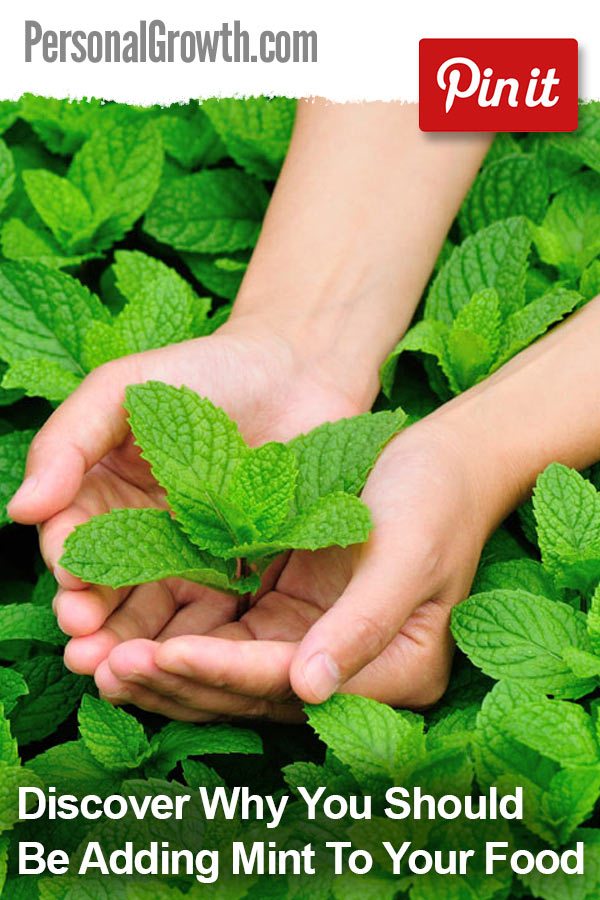

You’ve probably heard all about the health benefits of using herbs in your meals. While oregano, thyme and rosemary are pretty mainstream, mint doesn’t always get the same attention.
That’s too bad since it’s a great way to enhance the flavors of your food and boost your health at the same time. You can find fresh mint at supermarkets, or you can grow it yourself in a windowsill garden. Either way, you’re going to love having it on hand when you prepare food and drinks. Here’s why.
Nutritional Benefits Of Mint
Mint, like many other herbs, is packed with all kinds of nutrients that support your overall health in a good way. To start with, mint is chock full of antioxidants. These are compounds found in pretty much all plant foods, and they are so important for your health.
Antioxidants combat free radical damage, which comes about from a poor diet, environmental toxins and lifestyle choices like smoking cigarettes. When free radical damage occurs, it alters the structure of your cells, which puts you at risk of a wide variety of health issues, from heart disease to cancer.
Boosting your antioxidant intake by eating more mint can help counteract that damage and protect your health at the same time.
If you’re watching your calories, mint is a no-brainer. It contains just one calorie per tablespoon. That makes it a great choice for making your meals taste great, but also keeps you from overdoing it on calories, which can lead to weight gain.
One of the biggest pieces of advice offered by weight loss experts is to cut cooking fat and replace it with herbs to keep your meals exciting while also aiding in dropping excess weight. Mint is a great addition to your personal herb garden.
Mint, like many plant foods, also contains fiber. You need fiber for various reasons, including weight control, regulating your digestion and warding off heart disease. While you can’t rely on mint to reach your entire fiber quota, it can certainly help you get to your daily intake recommendation. Two tablespoons of mint contains nearly 0.5 grams of fiber.
In addition, mint also contains trace amounts of other vital nutrients. These include potassium, which is important for regulating your blood pressure and keeping your heart in top working order.
Mint also offers up magnesium, which your bones rely on to stay strong and healthy. You also get a bit of calcium, another mineral that is important for a healthy skeleton.
There are also vitamins A and C in mint, which protect your immune system and help your body fight viruses and bacteria that could make you sick.
The Health Perks Of Mint
In addition to the benefits you get from the vitamins and minerals that mint contains, there are also specific reasons why eating it can boost your health. One is the digestive benefits that mint has to offer.
The fiber in mint is beneficial, but combined with that is the soothing properties that mint has. It can help calm the flare-up of several digestive disturbances, including irritable bowel syndrome and indigestion. Mint can also help quell the cramping and general discomfort associated with flatulence and bloating.
If you’ve tasted or smelled fresh mint, you know how strong and intense its aroma is. That’s great news for people with respiratory issues, because the menthol that the mint leaves contain can help open up congested sinuses and lungs.
People with asthma may notice less inflammation in their chests when they eat foods that contain mint. It’s also effective for clearing up a stuffy nose when you have a cold or your allergies are bothering you.
Research studies on a specific type of mint – Brazilian mint – have shown that it can relieve pain in a similar way to aspirin-based medications. The study used mint tea to test the theory, but it’s assumed that ingesting it in other ways could offer similar benefits. Talk this over with your doctor before trying it.
You can also use mint to calm and cool the sting and pain that comes when you are bitten by an insect or have a rash. In this case, you would use the mint topically by applying it directly to the affected area of your body. When it comes to skin, mint can also relieve the nipple pain and cracking that many breastfeeding mothers experience.
Mint is also highly beneficial for promoting good oral health. It has disinfectant properties that can improve bad breath and make the inside of your mouth fresh and clean. You see mint in many mouthwashes and toothpastes, but eating fresh mint can boost the benefits of using those products and is a quick and easy way to cover up a pungent meal when you don’t have a toothbrush with you and can’t refresh your breath.
How To Add Mint To Your Meal Plans
There are many great ways to use mint in your cooking. That gives you plenty of options so you can find what works best for you. One of the easiest ways to benefit from mint is by adding it to your iced tea.
Simply muddle the mint in your glass, and then top it with ice and tea and enjoy. The flavor makes the tea extra-refreshing, and you get all the perks of the mint at the same time. You can also add mint to fresh limeade or lemonade in the summertime.
Mint is also a tasty addition to fresh fruit salad or salsa because it perfectly complements the flavors of many kinds of fruit, including mangoes, strawberries, kiwis and much more. You can serve this with cinnamon tortilla chips or grilled white fish or chicken breast.
The use of mint is very common in Middle Eastern cuisine, so try it in soup or salad, or use it to add flavor and nutrition to lamb dishes. It’s also good in dips and spreads.
Some people rave about the flavor of mint in potato salad, and it makes a refreshing addition to summer rolls as well. Toss fresh mint in a vegetable dish for a pleasant and exciting taste that you will love.
Other ways to use mint include homemade salad dressings, marinades and sauces. Experiment to find what you love the most.

In general, consuming mint is safe for the average person. However, despite its health benefits, you should never replace medication or other forms of treatment with mint unless told to do so by a doctor.
If you have certain digestive, respiratory or skin conditions, mint might not be the best choice for you. Enjoying mint in your meals is something you will quickly grow fond of and your body will thank you for your entire lifetime. Who knows? Mint might be what you’ve been looking for all along!

